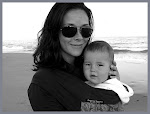
Join Us This Tuesday!
MEDBASICS at Baby Bites NYC
June 2, 2009 12-2 pm
 | |
Every mom who attends this luncheon will take home a travel pack, your essential what to do guide to infant emergencies on the go. | |
is choking...
stops breathing...
is bleeding...
Do you know what to do? Does your babysitter?
Don't worry, if your baby needs medical help you can do it and Luke Hermann MD and Tara Summers-Hermann RN, BSN will show you how.
Discover the most common choking hazards and how the steps to saving your infant are different than saving your toddler. Learn why you hold direct pressure to a cut and find out the truth about tourniquets. When your baby has a fever, know when to call the doctor and how high is too high. Find out how to create a safer environment for your little one.
Other topics include SIDS, animal bites, falls, drowning, and allergic reactions.
Knowledge = Love
Love your baby, know what to do.
Tara Summers-Hermann, RN, BSN is the co-founder and President of MEDBASICS, LLC. After years of specializing in Cardiology , she traded full time nursing for full time motherhood with the birth of her first son, Nicholas. After a choking episode involving her son, she and her physician husband started MEDBASICS, LLC. Tara is an AHA Certified BCLS instructor with her primary focus being infant and toddler CPR/ first-aid courses. She lives in New York City with her husband Luke and 2 sons, Nicholas and Oliver. Luke Hermann, MD is the co-founder and Vice-President of MEDBASICS, LLC. Dr. Hermann is a practicing emergency physician on academic faculty at a major New York Hospital.






















